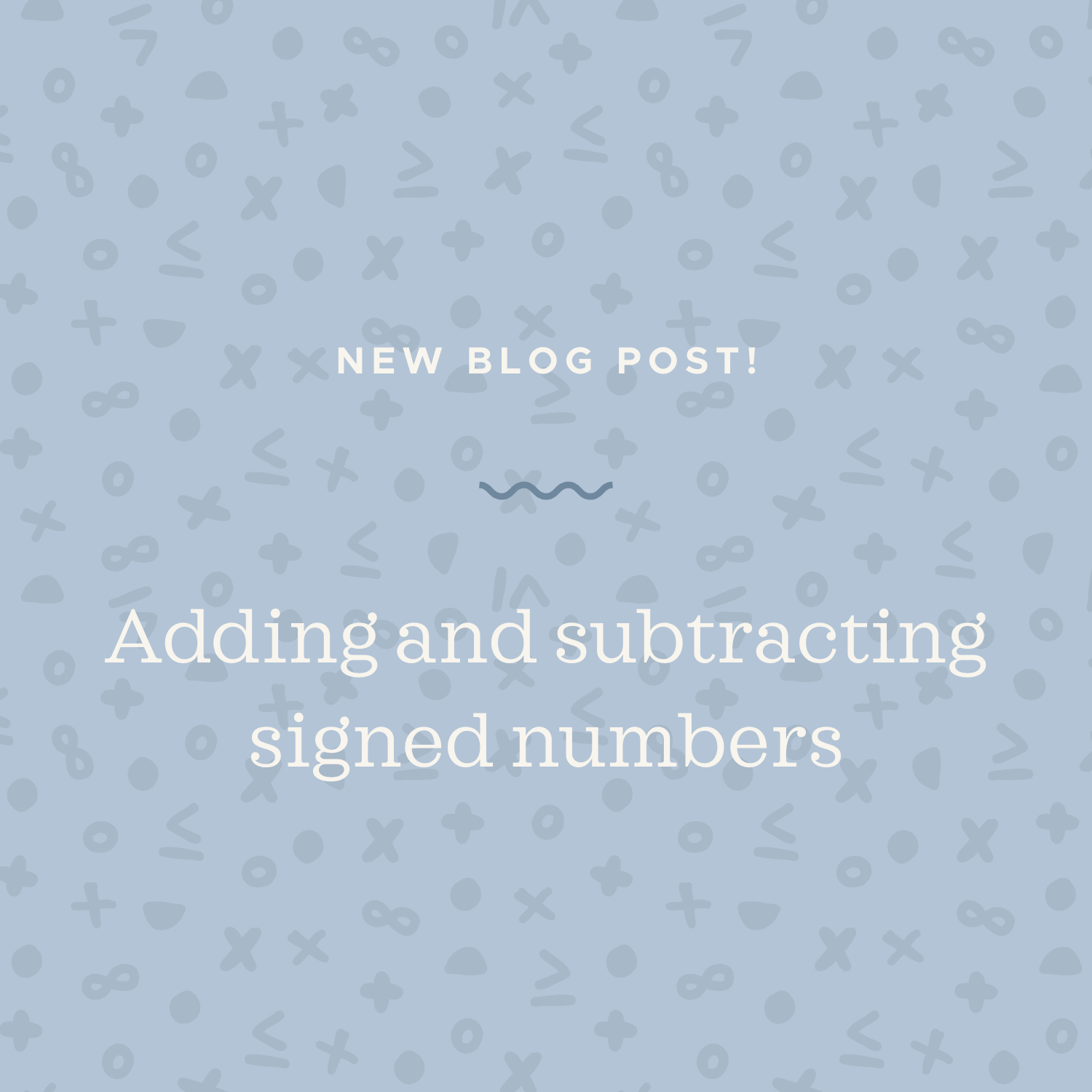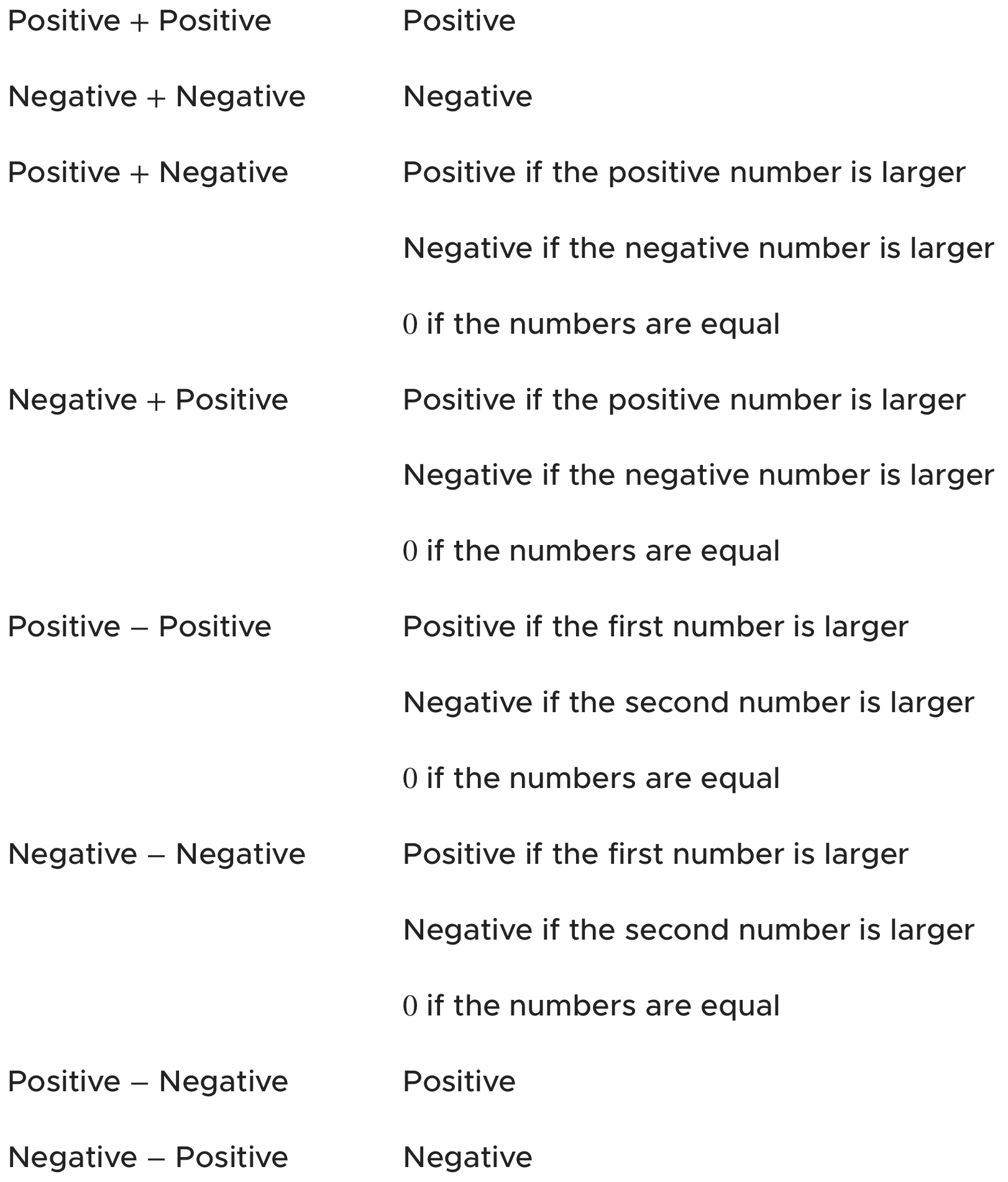Adding and subtracting signed numbers
What are signed numbers?
Think about signed numbers just as positive and negative numbers. Positive numbers have positive signs (even though we often write positive numbers without actually putting a positive sign in front of them), whereas negative numbers have negative signs. So ???3???, ???7???, and ???11??? are all positive numbers, but ???-2???, ???-6???, and ???-9??? are all negative numbers.
Hi! I'm krista.
I create online courses to help you rock your math class. Read more.
When it comes to adding and subtracting signed numbers, let’s break down the three possible combinations we could face when we have two signed numbers:
Two positive numbers
Two negative numbers
One positive number and one negative number
Let’s tackle adding numbers for these three combinations.
Positive ???+??? Positive ???=??? Positive. The trick is: add the numbers, keeping the sign positive.
???3+4=7???
???10+1=11???
Negative ???+??? Negative ???=??? Negative. The trick is: add the numbers as if they were both positive, but make the sign negative.
???-3+(-4)=-7???
???-10+(-1)=-11???
Positive ???+??? Negative, Negative ???+??? Positive. When we add one positive number and one negative number, the result will be positive if the positive number is larger, but negative if the negative number is larger. The trick is: think of the numbers as if they were both positive, and subtract the smaller number from the larger number; the sign of the answer will be the original sign of the larger number.
???3+(-4)=-1???
Here, the negative number is ???-4??? and the positive number is ???3???. ???4??? is larger than ???3???, so the negative number is larger, which means the answer will be negative. So we subtract ???3??? from ???4??? and get ???1???, The sign needs to be negative, so we get ???-1???.
???10+(-1)=9???
Here, the negative number is ???-1???, and the positive number is ???10???. ???10??? is larger than ???1???, so the positive number is larger, which means the answer will be positive. So we subtract ???1??? from ???10??? and get ???9???. The sign needs to be positive, so we get ???9???.
If the positive number and the negative number are opposites, the answer is ???0???.
???3+(-3)=0???
???-10+10=0???
Let’s tackle subtracting numbers for the same combinations we considered for addition.
Positive ???-??? Positive. When we subtract one positive number from another, the result will be positive if the first number is larger, but negative if the second number is larger.
???3-4=3+(-4)=-1???
Here, the first number is ???3??? and the second number is ???4???. Since ???4>3???, the second number is larger so the result is negative.
???10-1=10+(-1)=9???
Here, the first number is ???10??? and the second number is ???1???. Since ???10>1???, the first number is larger so the sign of the result is positive.
If the two positive numbers are equal, the result is ???0???.
???3-3=3+(-3)=0???
Negative ???-??? Negative. When we subtract one negative number from another, the result will be positive if the first number is larger, but negative if the second number is larger.
???-3-(-4)=-3+4=1???
Here, the first number is ???-3??? and the second number is ???-4???. Since ???-3>-4???, the first number is larger so the result is positive.
???-10-(-1)=-10+1=-9???
Here, the first number is ???-10??? and the second number is ???-1???. Since ???-1>-10???, the second number is larger so the sign of the result is negative.
If the two negative numbers are equal, the result is ???0???.
???-3-(-3)=-3+3=0???
Notice that the effect of subtracting a negative number is that the two negative signs cancel.
Positive ???-??? Negative ???=??? Positive. When we subtract a negative number from a positive number, the result will always be positive.
???3-(-4)=3+4=7???
???10-(-1)=10+1=11???
Negative ???-??? Positive ???=??? Negative. When we subtract a positive number from a negative number, the result will always be negative.
???-3-4=-3+(-4)=-7???
???-10-1=-10+(-1)=-11???
Here’s a summary of our findings:
Keep in mind that when you add signed numbers, the order of the numbers doesn’t make a difference.
???3+4=7=4+3???
???-10+(-1)=-11=-1+(-10)???
???-3+(-4)=-7=-4+(-3)???
???10+(-1)=9=-1+10???
???3+(-3)=0=-3+3???
But if you subtract signed numbers, the order of the numbers always matters.
???3-4=3+(-4)=-1??? but ???4-3=4+(-3)=1???
???-10-(-1)=-10+1=-9??? but ???-1-(-10)=-1+10=9???
???-3-(-4)=-3+4=1??? but ???-4-(-3)=-4+3=-1???
???10-(-1)=10+1=11??? but ???-1-10=-1+(-10)=-11???






